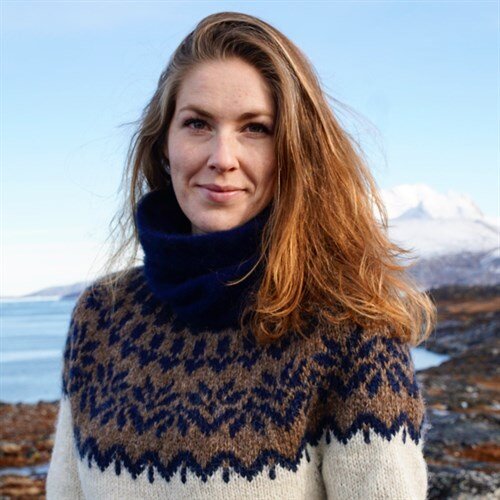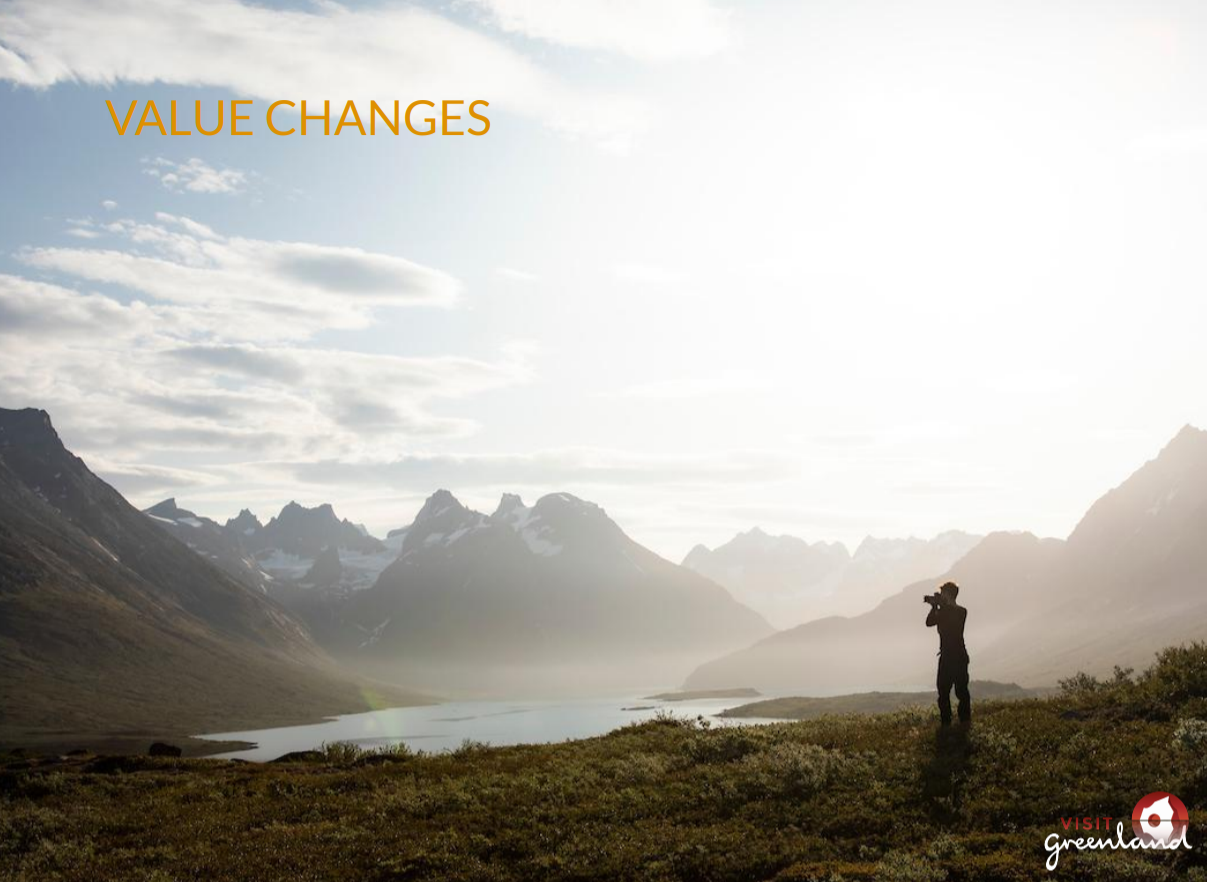by Janus Boye
Stine Selmer has worked in Greenland since 2015
While the pandemic has hit each industry and country differently, few are more hit than those relying on tourism. In particular those in destinations further away than a drive or train ride.
For our final member call in 2020, we looked to the home country of Santa Claus and heard from Stine Selmer Andersen at Visit Greenland.
Using her work with destination development and sustainability, Stine Selmer Andersen dived into the new reality and trends of tourism and gave a behind-the-scenes look into what you do, when you drive tourism to a country, which is practically impossible for foreigners to visit.
In other words, a different angle on customer experience, digital business development and the new normal.
A new strategy and four must-wins
Stine started her presentation by sharing the four must-wins Visit Greenland launched as main goals of their new strategy from spring 2020:
Increase demand from adventure tourists
Tourism all year in all of Greenland
Knowledge sharing and competence development
Support a healthy framework for tourism.
Sounds totally reasonable right? Then COVID happened and obviously, the entire foundation of tourism had changed. Travel restrictions were put in place. Internally in Greenland, business meetings were banned across municipal borders and to make things more tricky, the travellers that were in the country were struggling as few of the guidelines and updated advisory was translated to English for the initial months. So suddenly the strategy had to be adjusted to the new reality of Greenlandic tourism.
456 cruise calls were cancelled. 3 months of flights being shut. Similar to other countries, Greenland also has had strict and frequently changing regulations and the biggest travel agencies suspended their services.
The number of guests to Greenland has returned to the same level as 20 years ago
At the beginning of the pandemic, Visit Greenland developed three scenarios:
Best case: Tourists can return in August
Middle case: Tourists can return in October
Worst case: Tourists can return in January 2021
At the moment, it looks like the worst case scenario, and then with some more delay.
To pivot, Visit Greenland worked with travel consultant Natasha Martin from Good Tourism. She supported Visit Greenland in trying to define the next level for sustainable tourism. Let’s look at what that means to Visit Greenland.
What's the future for sustainable tourism?
First and foremost, Stine talked about improved online experiences. Similar to how theatres are doing more online, destinations need to do the same to build demand. Below an example with a long-format (12-minute) video created with some storytelling shaped by religious taboos and the harsh history of Greenland.
Virtual reality could be a big force as well, although Visit Greenland hasn’t started yet.
There’s also a change in how we perceive value. Previously it was about the amazing Instagram photo. Now it is more focused on safe travel, on getting into nature, and deeper immersion into the experience you are paying for. As Stine said, many of their visitors in the past used to be focused on getting as many experiences as possible in a short time. Now tourists are expecting a deeper appreciation of travel.
Stine’s slides were packed with stunning photos from Greenland
Naturally there’s also physical distancing. This is easier on Greenland than in say Venice. Greenland is a very big island and with a very small population, which makes it quite easy to travel in small and isolated groups.
Similar to other countries, there’ also more domestic travel. Many European countries rolled out staycation campaigns for domestic travellers, so that they could explore new parts of their own country. This has helped save some of the travel season.
When it comes to changing demographics, the average tourist in Greenland is above 55 years old at the moment. Stine said that they are expecting to see a younger audience.
Finally, prices will go up. There’s a need for profitability and as many have gone out of business, there’s just less options. As demand goes up, supply is not yet there again.
As Stine said in the wrap up: Product innovation and safety storytelling is the key to attract customers. And all the experts say: People will travel as soon as they can do so safely.
Learn more about tourism best practices
Stine also mentioned ASMR and their work to create new and relevant content. Quite a few on the call, hadn’t heard about ASMR before and in brief it is a genre of videos characterized by "a combination of positive feelings and a distinct static-like tingling sensation on the skin”. Theresa Regli was quick on the chat and also shared this NY Times article: How A.S.M.R. Became a Sensation. VisitGreenland is expecting to launch ASMR videos in the spring.
You can also download the slides (PDF) or enjoy the entire 29-minute recording below



